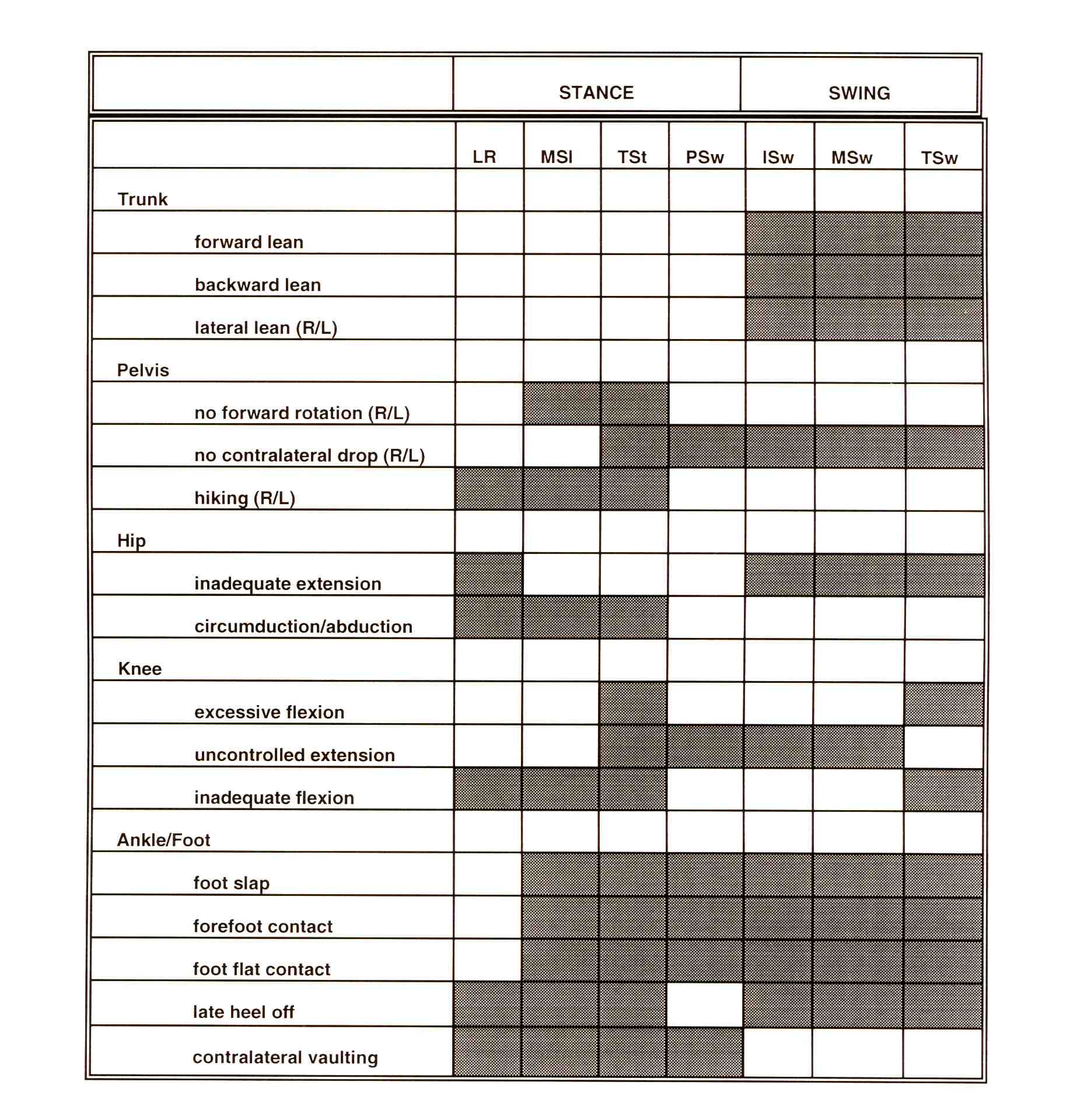
download Word version of the checklist

|
|---|
Sources:
Eastlack, M.E., Arvidson, J., & Snyder-Mackler, L., et. al. (1991). Interrater reliability of videotaped observational gait analysis assessments. Physical Therapy, 71, 465-472.
Krebs, D.E., Edelstein, J.E., & Fishman, S. (1985). Reliability of observational kinematic gait analysis. Physical Therapy, 65, 1027-1033.
Professional Staff Association of Rancho Los Amigos Medical Center. (1989). Observational gait analysis handbook. Downey, CA: Author.